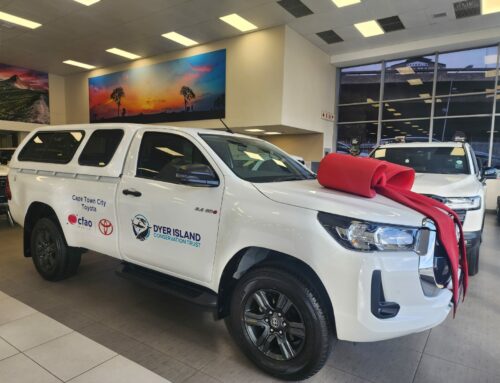South Africa’s most endangered dolphin needs your help!
March 02, 2017 Meredith Thornton & Sandra Hoerbst
At the Dyer Island Conservation Trust we are lucky to have one of South Africa’s lesser-known species of dolphin occurring right here in the Greater Dyer Island Area. This is a shy and somewhat elusive species called the Indian Ocean humpback dolphin. Their species, or Latin, name is Sousa plumbea and they are officially classified as endangered in South African waters.
There are probably less than 10 000 in the world and most likely only a few hundred left in South Africa! This very small population size means that they are South Africa’s most endangered dolphin and are thus in need of increased protection and continued monitoring. They live close inshore, usually in waters less than 20m deep, and are often found around river mouths, like the Uilkraal estuary.
Humpback dolphins are very easy to recognise – they surface by first sticking their rostrum/snout right out of the water, and then when they dive forward you can see a fleshy hump on their back. Males are larger than females and can grow to about 2.8 m in length. Their colouring is generally grey with a paler belly that is sometimes spotted. When they breach many times then this belly becomes pink with the increased blood supply. As animals become older their dorsal hump and fin can show lots of white scarring, so they usually appear light grey when they are old. The scarring probably occurs from biting one another and from failed shark attacks.
Unfortunately for humpback dolphins they use exactly the same areas of the coast that humans do, so besides for shark predation, threats are usually as a result of man’s activities. Power boats and jetskis disturb their behaviour, shark nets put up to protect bathers indiscriminately catch dolphins too and because they like estuarine areas they are especially vulnerable to exposure to pesticides and other pollutants that make their way from agricultural areas down the river system and into the sea – often being accumulated in the prey that humpback dolphins consume. This can kill newborn calves when they feed on polluted milk from their mothers and it can weaken an adult dolphin’s defence against diseases.
“






